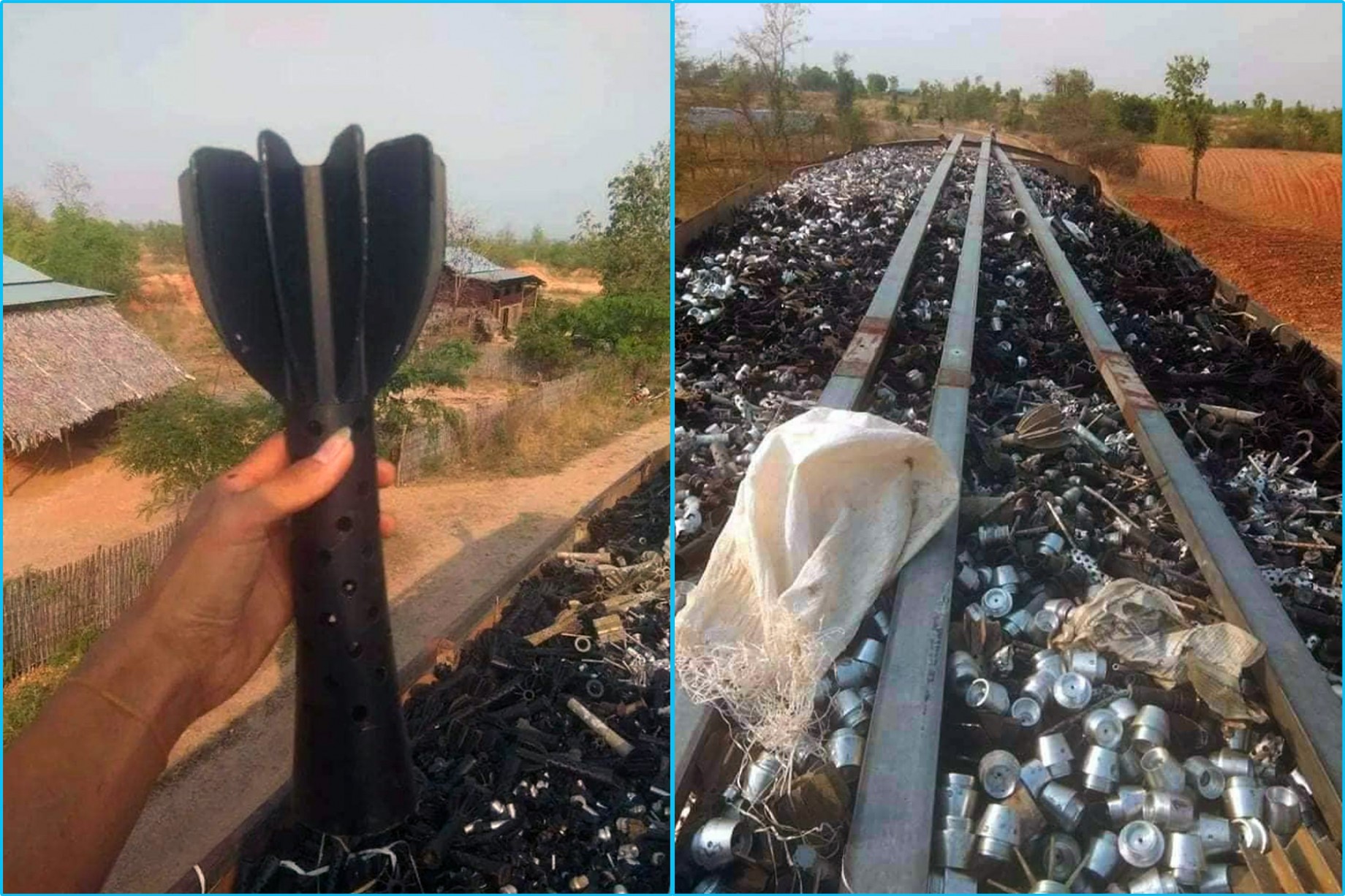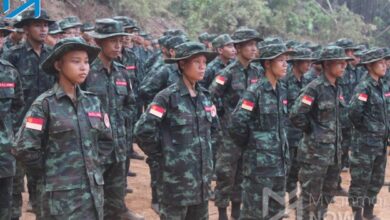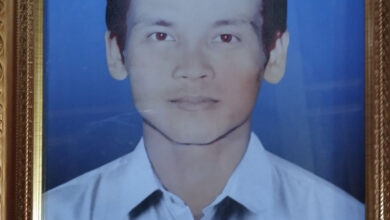
The Myanmar army launched a series of airstrikes on Magway Region’s Pauk Township on Thursday one day after an alliance of local anti-junta defence forces reportedly ambushed a military convoy in the area and confiscated the weapons parts they were carrying.
The three army trucks ambushed near Shar Pin village on the Pathein-Monywa highway in Pauk at 5pm on Wednesday were believed to have been coming from the Defence Industry Factory No. 12 in Thayet Township, to the south.
They were carrying materials used to construct 60mm and 81mm mortar shells, which the resistance fighters seized, according to a leader of one of the groups involved. The attack marked the first major haul of arms parts by guerrilla forces since the February 2021 coup.
Sun Ye, the Burmese name for “Falcon” and the commander of Battalion 1 of the Pauk People’s Defence Force (PDF), told Myanmar Now that his members and their allies captured seven troops, including a captain, and three drivers. One soldier—a private—was reportedly killed in the ambush.
Myanmar Now was unable to independently verify if the defence forces suffered any casualties in the incident, nor the condition or whereabouts of the junta soldiers who were captured.
The following morning, more than 100 Myanmar army troops started raiding villages between Pauk and Pakkoku townships near the Yaw stream, according to both Sun Ye and other locals.
Among the raiding forces were members of the military-backed Pyu Saw Htee militias, as well as police officers, they said.
The column reportedly set fire to the 200-household village of Yae Kyaw in Pauk, a local man told Myanmar Now, who noted that the militia members have become notorious for burning homes in the area.
“They came in five trucks early in the morning and then started marching on foot and torching the houses. There is always arson when there are Pyu Saw Htee members involved,” he said.
A man from Pakkoku said two military helicopters also arrived between 12pm and 3pm and opened fire on communities along the stream, displacing residents of three villages in Pauk—Kyunbin, Kyunyin and Nat Sin Kone—and two in Pakkoku: Mi Gyaung Twin and Gawun Lay Taing.
“All the residents of the villages in the area had to flee as the helicopters hovered around and fired shots from the air,” he told Myanmar Now.
Two villagers from Nat Sin Kone were reportedly killed in the airstrikes and several more injured, according to local accounts.
Myanmar Now is unable to confirm the casualties and the extent of the damage to villages in the area.
Sun Ye of the Pauk PDF said that all day on Thursday junta soldiers stationed on the western banks of the Yaw stream in Pinhtaung village fired heavy artillery into locations where they assumed the defence force would be hiding along the eastern banks of the waterway.
“We also fired some heavy artillery shells back at them. However, just as they have been failing to actually hit us, we don’t know if we managed to hit them either,” he added.
While the attacks ended by around 3pm, tension in the area was still high at the time of reporting.
Sun Ye did not disclose how or where the missile parts confiscated by the PDF on Wednesday were being stored.
Kaung Htet Aung, a private in the Myanmar military who defected to the resistance from a defence industry factory in Pyay, Bago Region, speculated that the parts seized by the guerrilla forces were likely materials that had been deemed unusable by the army.
“Those are raw materials to make heavy artillery shells. I think they were parts that didn’t pass quality control. Those are usually melted down at Defence Industry Factory No. 24,” he said, referring to the weapons factory located in Pauk.
The junta did not respond to Myanmar Now’s request for comment on the issue.
![Resistance fighters holding heavy weapons ammunition in central Myanmar. (Photo: Freedom Revolution Force [FRF])](https://myanmar-now.org/en/wp-content/uploads/sites/5/2024/04/438869056_443267851680128_1706386881626943924_n-390x220.jpeg)


